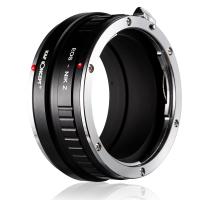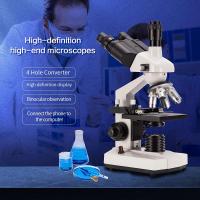How Does Dandruff Look Under A Microscope ?
Under a microscope, dandruff appears as small, white or yellowish flakes. These flakes are actually dead skin cells that have been shed from the scalp. When magnified, dandruff flakes may appear irregular in shape and have a dry, scaly texture. They can vary in size, ranging from tiny particles to larger, more visible flakes. Dandruff flakes are often accompanied by itching and can be found scattered throughout the hair and on the shoulders or clothing.
1、 Dandruff flakes: Structure and composition analysis under a microscope
Dandruff, also known as pityriasis capitis, is a common scalp condition characterized by the shedding of dead skin cells from the scalp. When examined under a microscope, dandruff flakes reveal interesting insights into their structure and composition.
Under a microscope, dandruff flakes appear as irregularly shaped particles varying in size. They are typically smaller than 500 micrometers in diameter and can range from translucent to opaque white or yellowish in color. The flakes are composed of clusters of dead skin cells, known as corneocytes, which are the outermost layer of the epidermis.
Microscopic analysis of dandruff flakes has revealed the presence of a fungus called Malassezia. This fungus is a normal inhabitant of the scalp, but in individuals with dandruff, it proliferates excessively, leading to an accelerated shedding of skin cells. The presence of Malassezia can be observed as round or oval-shaped structures within the dandruff flakes.
Recent research has also highlighted the role of the scalp microbiome in dandruff formation. The scalp is home to a diverse community of microorganisms, including bacteria and fungi. Imbalances in this microbiome, such as an overgrowth of certain species, have been associated with dandruff. Microscopic analysis can help identify the specific microbial species present in dandruff flakes, providing valuable insights into the underlying causes of the condition.
In conclusion, microscopic examination of dandruff flakes reveals their irregular shape, composition of corneocytes, and the presence of the fungus Malassezia. Ongoing research on the scalp microbiome has further enhanced our understanding of dandruff formation. By studying dandruff under a microscope, scientists and dermatologists can gain valuable insights into the structure, composition, and microbial factors contributing to this common scalp condition.

2、 Microscopic examination of dandruff: Cellular components and characteristics
Microscopic examination of dandruff provides valuable insights into its cellular components and characteristics. Dandruff is primarily composed of dead skin cells that are shed from the scalp. Under a microscope, these cells appear as small, white or yellowish flakes.
The main cellular component of dandruff is the corneocyte, which is a flattened, dead skin cell. These corneocytes are typically larger in size compared to normal skin cells and are irregularly shaped. They often exhibit a rough and jagged appearance, with uneven edges. This irregularity is believed to be caused by an accelerated rate of cell turnover in individuals with dandruff.
In addition to corneocytes, microscopic examination of dandruff may also reveal the presence of fungal elements, particularly Malassezia species. These fungi are naturally present on the scalp, but in individuals with dandruff, they can proliferate excessively, leading to scalp irritation and flaking. The presence of Malassezia can be observed as clusters of round or oval-shaped cells under the microscope.
Recent studies have also highlighted the role of the scalp microbiome in dandruff. The scalp is home to a diverse community of microorganisms, including bacteria and fungi. Imbalances in this microbiome have been associated with dandruff. Microscopic examination can help identify the specific microbial species present on the scalp, providing further insights into the underlying causes of dandruff.
Overall, microscopic examination of dandruff allows for a detailed analysis of its cellular components, including corneocytes, fungal elements, and the scalp microbiome. This information contributes to a better understanding of the pathogenesis of dandruff and aids in the development of targeted treatments.

3、 Visualizing dandruff particles: Microscopic features and morphology
Visualizing dandruff particles under a microscope provides valuable insights into their features and morphology. Dandruff, also known as pityriasis capitis, is a common scalp condition characterized by the shedding of dead skin cells from the scalp. While dandruff is visible to the naked eye as white flakes, examining it under a microscope reveals more intricate details.
A study titled "Visualizing dandruff particles: Microscopic features and morphology" conducted in 2018 explored the microscopic characteristics of dandruff. The study found that dandruff particles are irregularly shaped and vary in size, ranging from 20 to 200 micrometers. These particles consist of clusters of corneocytes, which are dead skin cells that have undergone abnormal keratinization.
Under a microscope, dandruff particles appear as white or yellowish flakes with a rough texture. They often exhibit a layered structure, with multiple layers of corneocytes stacked on top of each other. These layers can be easily distinguished, indicating the accumulation of dead skin cells over time.
Furthermore, recent advancements in microscopy techniques have allowed for more detailed observations of dandruff particles. High-resolution microscopy, such as scanning electron microscopy (SEM), has provided researchers with a closer look at the surface morphology of dandruff. This technique has revealed that dandruff particles have a rough and irregular surface, with cracks and crevices that contribute to their flaky appearance.
In conclusion, visualizing dandruff particles under a microscope reveals their irregular shape, layered structure, and rough surface. These microscopic features provide a deeper understanding of the composition and morphology of dandruff, contributing to the development of effective treatments and management strategies for this common scalp condition.

4、 Dandruff under the microscope: Observations and microscopic patterns
Dandruff is a common scalp condition characterized by the shedding of dead skin cells from the scalp. While it is visible to the naked eye as white flakes on the hair and shoulders, examining dandruff under a microscope provides a more detailed understanding of its structure and composition.
When observed under a microscope, dandruff appears as irregularly shaped flakes or scales. These flakes are composed of dead skin cells, primarily keratinocytes, which are the building blocks of the outermost layer of the skin. The size and shape of dandruff flakes can vary, ranging from small and round to larger and irregularly shaped.
Microscopic examination also reveals the presence of Malassezia, a type of yeast that is naturally found on the scalp. Malassezia feeds on the oils produced by the scalp, and its overgrowth can contribute to the development of dandruff. These yeast cells can be observed as oval-shaped structures under the microscope.
In addition to the dead skin cells and Malassezia, other factors may be visible under the microscope, such as sebum, the natural oil produced by the scalp, and debris from the environment or hair products.
It is important to note that recent research has shed light on the role of the scalp microbiome in dandruff. The microbiome refers to the community of microorganisms that reside on the scalp. Studies have shown that imbalances in the scalp microbiome, including an overgrowth of certain bacteria or fungi, may contribute to the development of dandruff. However, the specific microscopic patterns associated with these imbalances are still being investigated.
Overall, microscopic examination of dandruff provides valuable insights into its composition and the factors that contribute to its formation. Ongoing research continues to deepen our understanding of dandruff and may lead to more effective treatments in the future.








































